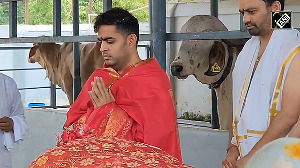The reduced growth is largely because of consumption slowdown and tax rate cuts.

The income-tax (I-T) department will ask for a cut of at least Rs 1 trillion in the target for direct tax collection in 2019-20 (FY20) because of growth in the segment sliding to 3 per cent as of October 31.
The reduced growth is largely because of consumption slowdown and tax rate cuts.
Corporation tax collection, net of refunds, grew by just 0.5 per cent in the first seven months of the fiscal year, against the year’s expansion target of 15.4 per cent at Rs 7.66 trillion.
Personal I-T collection grew by 5 per cent till October, against the year’s target of 22.4 per cent at Rs 5.69 trillion.
Direct tax collection touched Rs 5.2 trillion, which is only 39 per cent of the year’s target of Rs 13.25 trillion.
Direct tax growth in FY20 was estimated at 17.3 per cent.
If the targets are not revised, collection will need to expand by around 30 per cent in the remaining five months of the fiscal year.
“We are expecting a cut of at least Rs 1 trillion in the Budget target for direct tax collection to bring it closer to the ground realities.
"Economic slowdown has severely affected our mop-up, and corporation tax cuts have made the target further unrealistic,” said a government official.
“The tax cuts for the corporate sector will help in reviving growth and, in turn, the tax mop-up only in the medium term,” he added.
The direct tax collection target was revised downwards by Rs 45,000 crore in the Budget of July, from the estimates in the Interim Budget presented in February.
The Central Board of Direct Taxes is anticipating a shortfall of around Rs 50,000 crore on account of economic slowdown and close to Rs 1 trillion because of the corporation tax rate cut.
To arrest corporate slowdown, Union Finance Minister Nirmala Sitharaman in September announced steep cuts in corporation tax rates, effective from April 1 this fiscal year.
The rate was cut to 22 per cent from 30 per cent for the existing companies that do not get any exemptions, and to 15 per cent from 25 per cent for new manufacturing companies.
With surcharge and cess, the effective tax rate for the existing companies has come down to 25.17 per cent, from 35 per cent.
The minimum alternate tax rate was also reduced from 18.5 per cent to 15 per cent.
“This will hit the exchequer by Rs 8,000-10,000 crore,” said the official.
This means lower collection in the immediate term.
According to a report in Business Standard, the tax outgo for the September quarter is down 3.1 per cent year-on-year.
As a result, the average effective rate of tax for the sample of 200 firms declined to 22.9 per cent during the second quarter of FY20, against 28.5 per cent in the year-ago quarter.
“We are hoping to collect Rs 50,000 crore this fiscal year from pursuing direct tax dues of past years.
"We are also asking the field staff to see if tax deducted at source by companies is being deposited on time,” said a senior government official.
Tax officers are finding signals from the finance minister - in her outreach programmes with officers - confusing.
In a meeting in Pune, she asked officers to observe a “bit of restraint” and not “overreach” while going about tax collection, but also pointing out that the tax collection target was an easy one to achieve.
“While we are being told to go easy on taxpayers, we have been given a Herculean target to achieve,” said another tax officer.
Advance tax collection, corporate, and personal income, grew 6 per cent between April and September, against 18 per cent in the year-ago period, according to sources in the know.
Advance tax collection after the second instalment by September 15 stood at Rs 2.2 trillion.
Tax buoyancy estimated this year, at 1.44, is higher than the 1.21 achieved last year.
Photograph: PTI Photo












 © 2025
© 2025